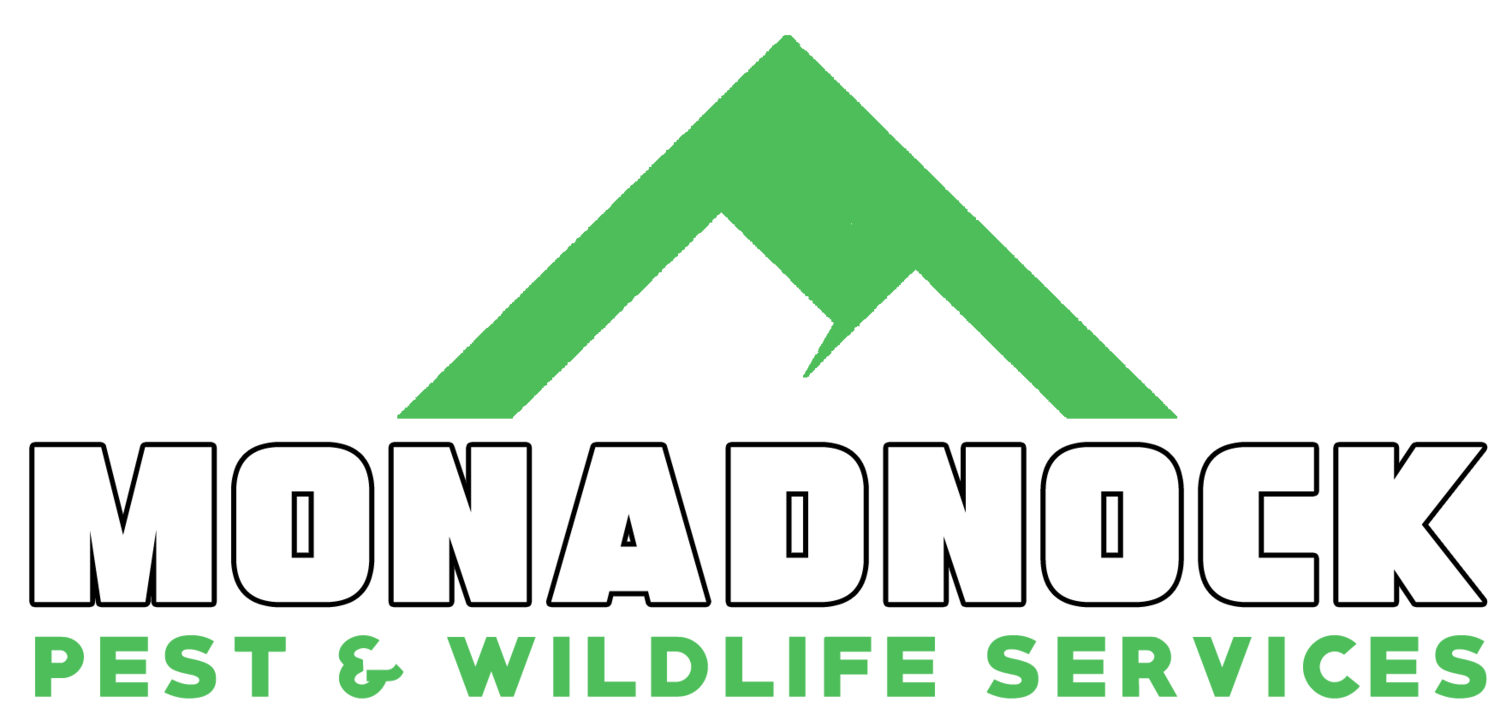Skunk activity blooms with “love” in the late New Hampshire winter
While Valentine’s Day has come and gone for folks in the Northeast, its safe to say romance, (and in this case, gland secretions) still linger in the late winter air for many of the region’s wildlife populations.
Mid-February tends to signal a spike in phone usage and “windshield time” for those of us in the wildlife control industry, with calls of pungent odors in the crisp night air; brought to you by the one and only Mephitis mephitis - the striped skunk!
Can’t you smell that smell?
When it comes to skunks, the search for a habitable den site commences in early fall. Suitable harborage areas include thickly wooded areas rich in earthy root systems, rock caverns, under logs or in established dug-out woodchuck burrows.
In the urban setting however, attractive harborage areas include the undersides of decks, garages, sheds, chicken coops, or other outbuildings, as well as warm dirt basement crawlspaces, and underneath hollow entry stairs or porches.
Particularly in winter, Females will commonly den together - with several females all sharing the same den site in colder climates. (My personal removal record is 12 skunks from under one tool shed!)
Typically once the start of February’s “breeding season” commences, male skunks will travel great distances to seek out their female counterparts in the female’s home-range territory. When male skunks finally discover the female’s burrow, males will court the females with rough biting around the neck and aggressive assertion. Many females, less than impressed, will typically let out a conservative squirt of their notorious gland spray, which is a mixture of sulfur-containing chemicals.
Females will also often release small amounts of their ill-famed foul odor to alert to traveling males that a den site is present.
Skunk brothels - who knew?
Its typically not long before an unsuspecting homeowner is made fully aware of the “lover’s quarrel” taking place in their yard or basement crawlspace. To add to the odorous chaos, skunks are not monogamous - meaning one male may court several females at a time; intensifying the odor in communal den site situations.
What can homeowners do to reduce skunk conflict?
Residents in rural and urban settings alike be forewarned! The stripped skipper of the olfactory senses will be brushing up on their perfume once breeding commences between February and late March. A brief checklist can assist with reducing skunk conflict.
Pet owners are advised to take a survey of their surroundings before releasing the family pooch for an evening bathroom break; as skunks will be increasing travel over the next few months.
Trash, outdoor pet-foods and birdseed should remain contained and quarantined to reduce skunk attraction to common nuisance areas around the home.
If snow cover is present, a survey should be taken for footprints and track troughs leading from underneath sheds, brush-piles, abandoned vehicles or other large-scale stored items where skunks may be living.
Open windows, holes/damage in foundations, window wells, air vents and other structure gaps at ground level should be repaired and properly sealed prior to cooler months to deter skunk harborage and attraction. If you are unsure if a skunk or other creature is already living in one of these spaces, a ball of newspaper or tall grass stuffed in the hole can determine if the gap is being used prior to sealing up. You don’t want to seal anything inside!
Love is in the air
Skunks aren’t the only New Hampshire furbearers getting their groove on in February and March. Other mustelids such as mink (neovision vision), river otter (Lontra canadensis) and the fisher (Martes pennanti), as well as rodents like beavers and muskrats are getting the “primal urge” to procreate this time of year.
Raccoons (Procyon lotor), as well as coyotes (canis latrans var) and red fox (vulpes vulpes) are at the tail end of their breeding season by March.
Opossums however, seem to “get the urge” whenever they darn-well please - with their breeding seasons beginning as early as December and continuing through the following October.
Having trouble with skunks? Think someone’s currently living under your porch, shed, or crawlspace? If you live in southern New Hampshire, I’m willing to assist - contact Monadnock Pest & Wildlife today for a worry-free inspection and estimate to assist with moving your resident skunks along!
